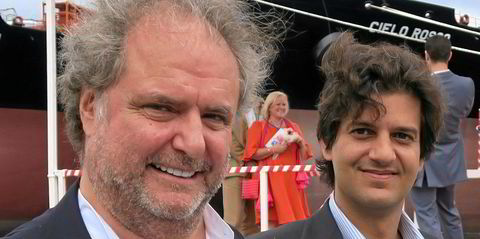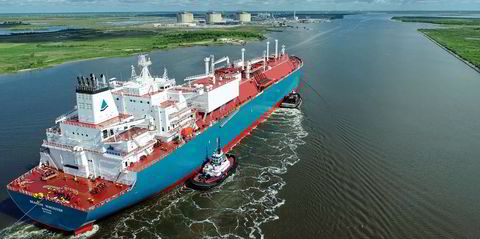Analysts have speculated on one possible way of ending the Mexican stand-off between John Fredriksen, the Saverys family and Euronav management.
Frontline backer Fredriksen has built his stake in Belgium’s Euronav to 25% in recent days after pulling out of a tie-up between the two tanker companies.
This is the same level of Euronav ownership as the Saverys family, the owner of shipping company CMB, which used that holding to block the full legal merger with Frontline and ultimately torpedo the backup plan of a fleet combination.
Clarkson Securities analysts led by Frode Morkedal noted that both sides can now block any new merger proposals.
“One potential outcome of this situation is a demerger of Euronav into separate companies, one representing the interests of CMB and the other representing the interests of Frontline,” they said.
Fredriksen wants to consolidate in the tanker sector, while the Saverys would prefer to shift Euronav towards decarbonisation, potentially through a merger with their hydrogen vessel start-up CMB.Tech.
Frontline had allied itself with Euronav chief executive Hugo De Stoop and other bosses, but the management is now seeking arbitration to halt Frontline’s exit because of what it sees as insufficient justification.
The Saverys, meanwhile, are trying to oust the supervisory board to pursue their own agenda.
It is not easy to see how Euronav could be divided equally, but one simple if lopsided way would be to spin off the conventional fleet to Frontline and the ammonia-ready newbuildings to CMB.
Tankers new and old
Clarksons lists Euronav with 70 vessels, including those on order.
The oldest tankers now date from 2006 and 2007, after some fleet renewal work in recent months.
The 300,000-dwt ammonia-ready VLCC Cassius has just been delivered from Hyundai Samho in South Korea, joining two ammonia-ready suezmaxes delivered last year from Daehan Shipbuilding (now DH Shipbuilding).
The ships also feature scrubbers and ballast water treatment systems and will be LNG-ready.
A further seven ships are on order through to 2024: two more VLCCs plus three suezmaxes from Samho and two suezmaxes from DH Shipbuilding.
There has been broker talk of the 441,600-dwt ULCC Oceania being up for sale, leaving two floating storage offloading vessels dating from 2002.
The fleet is assessed as worth $4.9bn by VesselsValue.





